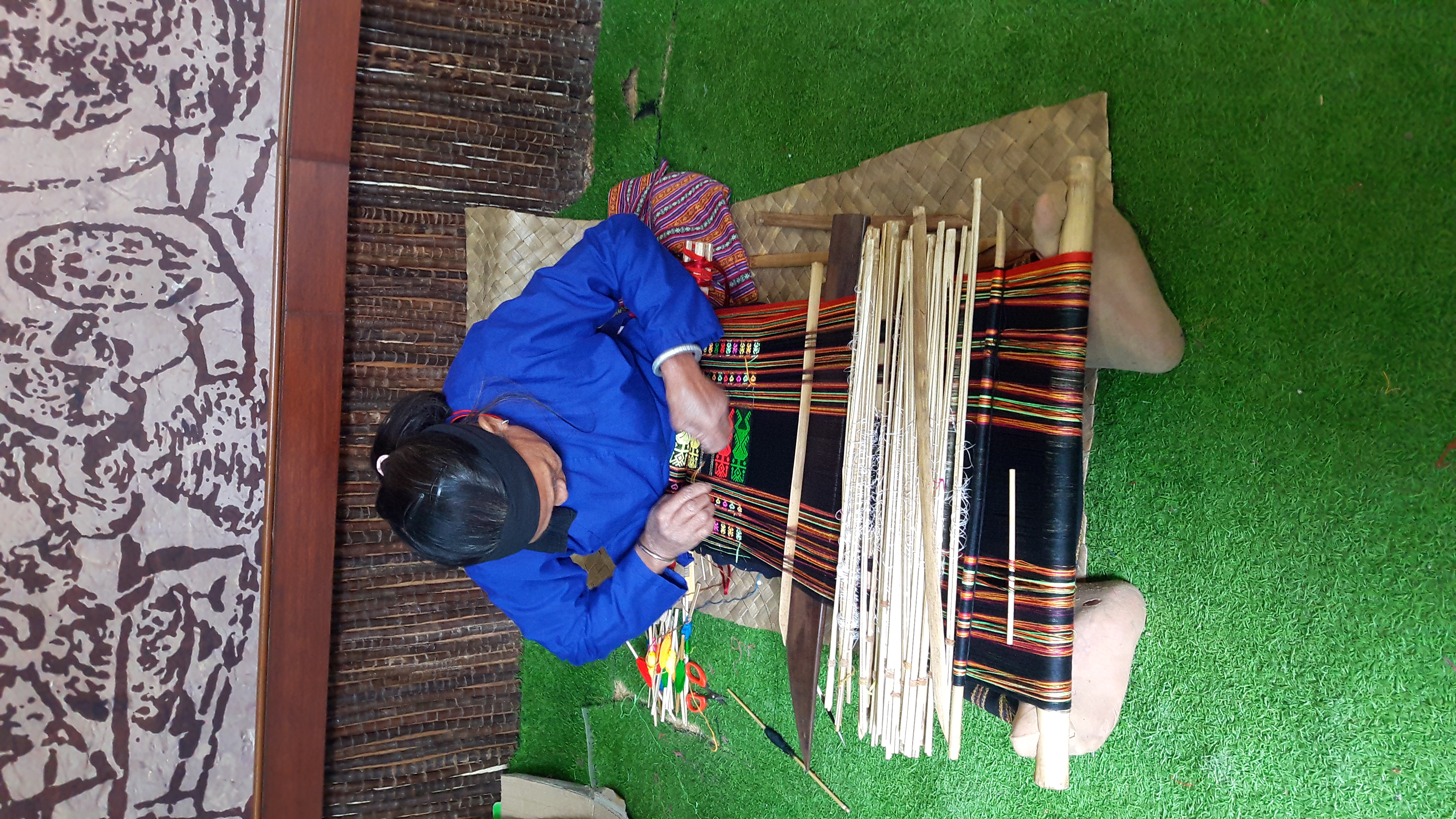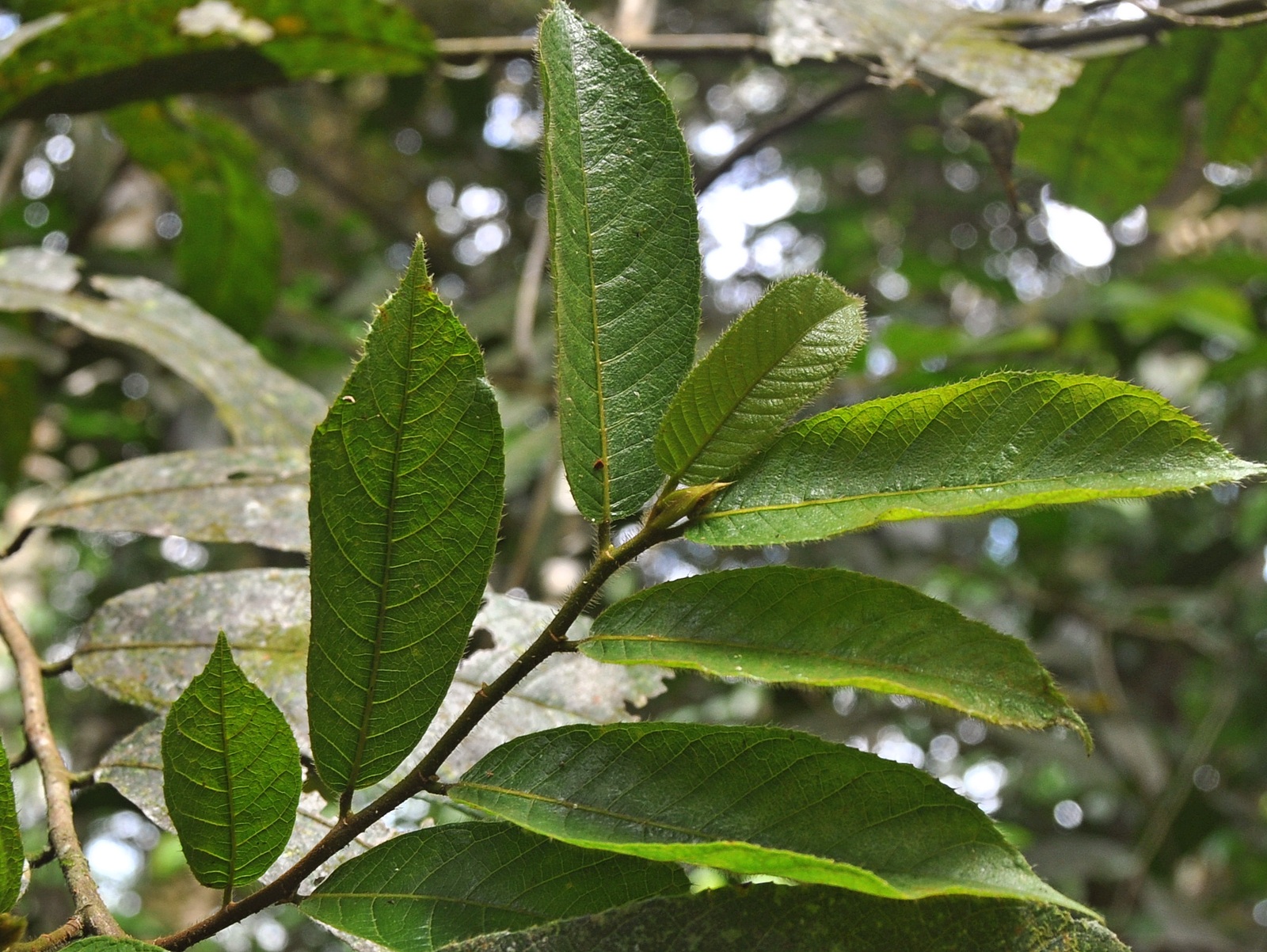|
Antiarin
Antiarins are cardiac glycoside poisons produced by the upas tree (''Antiaris toxicaria''). There are two forms, α-antiarin and β-antiarin. β-Antiarin β-Antiarin, a cardiac glycoside steroid, can be isolated from upas tree latex (''Antiaris toxicaria''). Its use ranges from medical use, such as hypertension treatment, to arrow poison application. It also proves to be more poisonous than curare, sporting a low LD50 of 0.1 mg/kg in most mammals. To date, β-antiarin has only been isolated from the upas tree by the scientist H. Kiliani in 1896; no synthetic synthesis has yet been achieved. Symptoms of β-antiarin poisoning Upon β-antiarin poisoning, when observed in animals such as frogs and small mammals, visible symptoms include muscle spasms — particularly of the head and neck — and excess defecation. Paralysis can also be presented before death. The primary physiological system affected is the cardiac muscle, though gastro-intestinal tissue has also been kno ... [...More Info...] [...Related Items...] OR: [Wikipedia] [Google] [Baidu] |
Cardiac Glycoside
Cardiac glycosides are a class of organic compounds that increase the output force of the heart and decrease its rate of contractions by inhibiting the cellular sodium-potassium ATPase pump. Their beneficial medical uses are as treatments for congestive heart failure and cardiac arrhythmias; however, their relative toxicity prevents them from being widely used. Most commonly found as secondary metabolites in several plants such as foxglove plants, these compounds nevertheless have a diverse range of biochemical effects regarding cardiac cell function and have also been suggested for use in cancer treatment. Classification General structure The general structure of a cardiac glycoside consists of a steroid molecule attached to a sugar (glycoside) and an R group. The steroid nucleus consists of four fused rings to which other functional groups such as methyl, hydroxyl, and aldehyde groups can be attached to influence the overall molecule's biological activity. Cardiac glycosi ... [...More Info...] [...Related Items...] OR: [Wikipedia] [Google] [Baidu] |
Li People
The Hlai, also known as Li or Lizu, are a Kra–Dai-speaking ethnic group, one of the 56 ethnic groups officially recognized by the People's Republic of China. The vast majority live off the southern coast of China on Hainan Island, where they are the largest minority ethnic group. Divided into the five branches of the Qi (Gei), Ha, Run (Zwn), Sai (Tai, Jiamao) and Meifu (Moifau), the Hlai have their own distinctive culture and customs. Names 黎 (Lí), which was pronounced /lei/ in Middle Chinese is the Chinese transcription of their native name, which is Hlai. They are sometimes also known as the "Sai" or "Say". During China's Sui Dynasty, their ancestors were known by various names, including ''Lǐliáo'' (), a general term encompassing several non-Han ethnic groups in Southern China. The name Li first is recorded during the Later Tang period (923–937 CE). History Liang & Zhang (1996:18-21) believe that the original homeland of the Hlai languages was the Leizhou P ... [...More Info...] [...Related Items...] OR: [Wikipedia] [Google] [Baidu] |
Aldehydes
In organic chemistry, an aldehyde () is an organic compound containing a functional group with the structure . The functional group itself (without the "R" side chain) can be referred to as an aldehyde but can also be classified as a formyl group. Aldehydes are common and play important roles in the technology and biological spheres. Structure and bonding Aldehydes feature a carbon center that is connected by a double bond to oxygen and a single bond to hydrogen and single bond to a third substituent, which is carbon or, in the case of formaldehyde, hydrogen. The central carbon is often described as being sp2- hybridized. The aldehyde group is somewhat polar. The C=O bond length is about 120-122 picometers. Physical properties and characterization Aldehydes have properties that are diverse and that depend on the remainder of the molecule. Smaller aldehydes are more soluble in water, formaldehyde and acetaldehyde completely so. The volatile aldehydes have pungent odors. Aldehy ... [...More Info...] [...Related Items...] OR: [Wikipedia] [Google] [Baidu] |
Cardiac Glycosides
Cardiac glycosides are a class of organic compounds that increase the output force of the heart and decrease its rate of contractions by inhibiting the cellular sodium-potassium ATPase pump. Their beneficial medical uses are as treatments for congestive heart failure and cardiac arrhythmias; however, their relative toxicity prevents them from being widely used. Most commonly found as secondary metabolites in several plants such as foxglove plants, these compounds nevertheless have a diverse range of biochemical effects regarding cardiac cell function and have also been suggested for use in cancer treatment. Classification General structure The general structure of a cardiac glycoside consists of a steroid molecule attached to a sugar (glycoside) and an R group. The steroid nucleus consists of four fused rings to which other functional groups such as methyl, hydroxyl, and aldehyde groups can be attached to influence the overall molecule's biological activity. Cardiac glycosi ... [...More Info...] [...Related Items...] OR: [Wikipedia] [Google] [Baidu] |
Plant Toxins
A toxin is a naturally occurring organic poison produced by metabolic activities of living cells or organisms. Toxins occur especially as a protein or conjugated protein. The term toxin was first used by organic chemist Ludwig Brieger (1849–1919) and is derived from the word toxic. Toxins can be small molecules, peptides, or proteins that are capable of causing disease on contact with or absorption by body tissues interacting with biological macromolecules such as enzymes or cellular receptors. Toxins vary greatly in their toxicity, ranging from usually minor (such as a bee sting) to potentially fatal even at extremely low doses (such as botulinum toxin). Toxins are largely secondary metabolites, which are organic compounds that are not directly involved in an organism's growth, development, or reproduction, instead often aiding it in matters of defense. Terminology Toxins are often distinguished from other chemical agents strictly based on their biological origin. Less s ... [...More Info...] [...Related Items...] OR: [Wikipedia] [Google] [Baidu] |
Strychnos
''Strychnos'' is a genus of flowering plants, belonging to the family Loganiaceae (sometimes Strychnaceae). The genus includes about 100 accepted species of trees and lianas, and more than 200 that are as yet unresolved. The genus is widely distributed around the world's tropics and is noted for the presence of poisonous indole alkaloids in the roots, stems and leaves of various species. Among these alkaloids are the well-known and virulent poisons strychnine and curare. Etymology The name ''strychnos'' was applied by Pliny the Elder in his '' Natural History'' to ''Solanum nigrum''. The word is derived from the Ancient Greek στρύχνον (''strúkhnon'') – "acrid", "bitter". The meaning of the word ''strychnos'' was not fixed in Ancient Greece, where it could designate a variety of different plants having in common the property of toxicity. Distribution The genus has a pantropical distribution. Taxonomy The genus is divided into 12 sections, though it is conceded that ... [...More Info...] [...Related Items...] OR: [Wikipedia] [Google] [Baidu] |
Derris Elliptica
''Derris eliptica'' is a species of leguminous plant from Southeast Asia and the southwest Pacific islands, including New Guinea. The roots of ''D. elliptica'' contain rotenone, a strong insecticide and fish poison. Also known as ''derris powder'' and ''tuba root'' (in Indonesia), it was formerly used as an organic insecticide used to control pests on crops such as peas. However, due to studies revealing the extreme toxicity of rotenone to which the powder is often refined, it is unsafe: in spite of its popularity with organic growers. Derris root, when crushed, releases rotenone. Some native residents of Fiji and New Guinea practice a form of fishing in which they crush the roots and throw them into the water. The stunned or killed fish float to the surface where they can be easily reached. Despite its toxicity, ''Derris'' is used as a food plant by Lepidopteran larvae including '' Batrachedra amydraula''. Subspecies The following subspecies are listed:Roskov Y., Kunze T., ... [...More Info...] [...Related Items...] OR: [Wikipedia] [Google] [Baidu] |
Rhamnose
Rhamnose (Rha, Rham) is a naturally occurring deoxy sugar. It can be classified as either a methyl-pentose or a 6-deoxy-hexose. Rhamnose predominantly occurs in nature in its L-form as L-rhamnose (6-deoxy-L-mannose). This is unusual, since most of the naturally occurring sugars are in D-form. Exceptions are the methyl pentoses L-fucose and L-rhamnose and the pentose L-arabinose. However, examples of naturally-occurring D-rhamnose include some species of bacteria, such as ''Pseudomonas aeruginosa'' and ''Helicobacter pylori''. Rhamnose can be isolated from Buckthorn (''Rhamnus''), poison sumac, and plants in the genus ''Uncaria''. Rhamnose is also produced by microalgae belonging to class Bacillariophyceae (diatoms). Rhamnose is commonly bound to other sugars in nature. It is a common glycone component of glycosides from many plants. Rhamnose is also a component of the outer cell membrane of acid-fast bacteria in the ''Mycobacterium'' genus, which includes the organism that cau ... [...More Info...] [...Related Items...] OR: [Wikipedia] [Google] [Baidu] |
Dayak People
The Dayak (; older spelling: Dajak) or Dyak or Dayuh are one of the native groups of Borneo. It is a loose term for over 200 riverine and hill-dwelling ethnic groups, located principally in the central and southern interior of Borneo, each with its own dialect, customs, laws, territory, and culture, although common distinguishing traits are readily identifiable. Dayak languages are categorised as part of the Austronesian languages. The Dayak were animist (Kaharingan and Folk Hindus) in belief; however, since the 19th century there has been mass conversion to Christianity as well as Islam due to the spreading of Abrahamic religions. Etymology It is commonly assumed that the name originates from the Bruneian and Melanau word for “interior people”, without any reference to an exact ethnic group. The term was adopted by Dutch and German authors as an umbrella term for any non-Muslim natives of Borneo. Thus, the difference between Dayaks and non-Dayaks natives could be un ... [...More Info...] [...Related Items...] OR: [Wikipedia] [Google] [Baidu] |
Antiaris Toxicaria
''Antiaris toxicaria'' is a tree in the mulberry and fig family, Moraceae. It is the only species currently recognized in the genus ''Antiaris''. The genus ''Antiaris'' was at one time considered to consist of several species, but is now regarded as just one variable species which can be further divided into five subspecies. One significant difference within the species is that the size of the fruit decreases as one travels from Africa to Polynesia. Antiaris has a remarkably wide distribution in tropical regions, occurring in Australia, tropical Asia, tropical Africa, Indonesia, the Philippines, Tonga, and various other tropical islands. Its seeds are spread by various birds and bats, and it is not clear how many of the populations are essentially invasive. The species is of interest as a source of wood, bark cloth, and pharmacological or toxic substances. Naming and etymology The generic epithet ''Antiaris'' is derived directly from the Javanese name for it: ''ancar''Heyne, K. ... [...More Info...] [...Related Items...] OR: [Wikipedia] [Google] [Baidu] |
.jpg)



